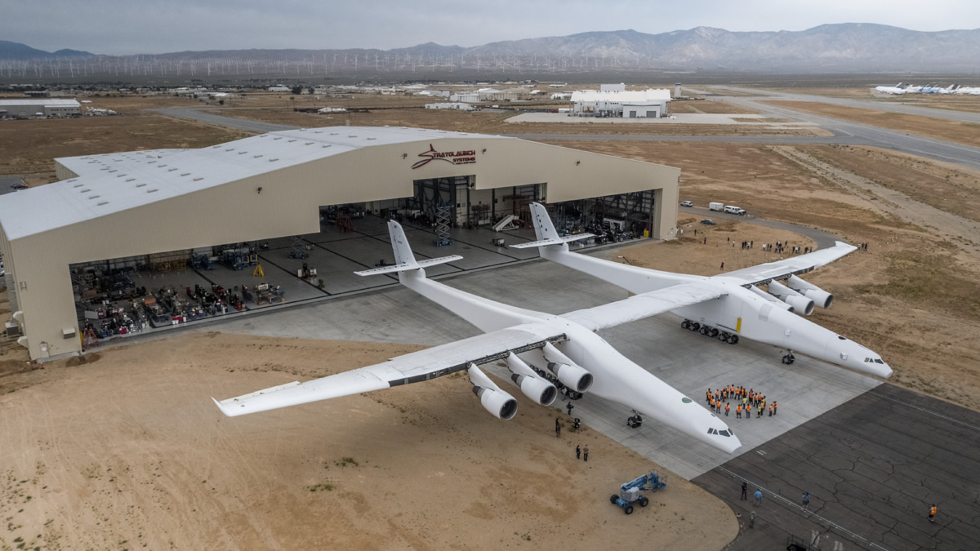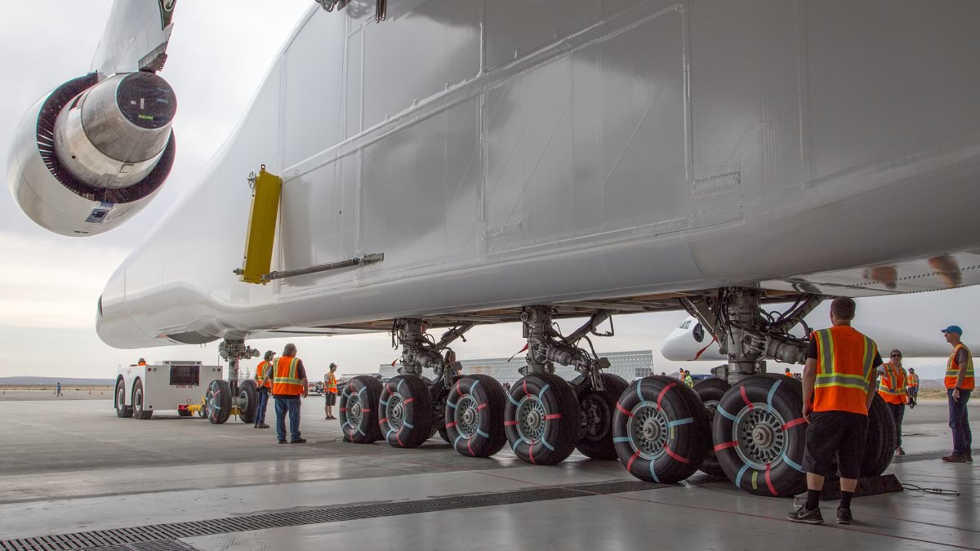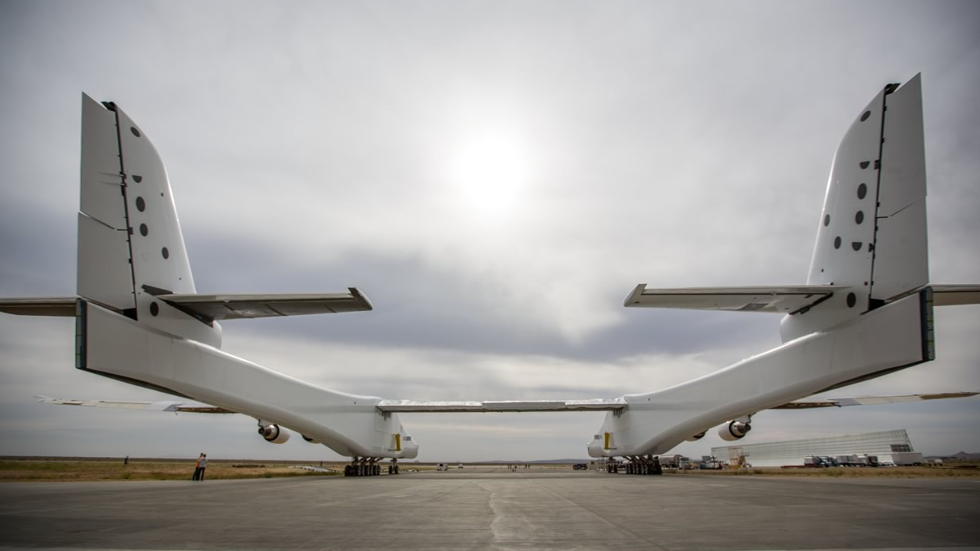
At 238’ (76m) long and with a wingspan of 385’(118m), Stratolaunch will be powered by six Pratt & Whitney PW4056 engines and deliver payloads of up to approximately 550,000Ibs (249,475kg) into space.
“Over the past few weeks, we have removed the fabrication infrastructure, including the three-story scaffolding surrounding the aircraft, and rested the aircraft’s full weight on its 28 wheels for the first time,” said Jean Floyd, CEO, Stratolaunch Systems Corporation. “This was a crucial step in preparing the aircraft for ground testing, engine runs, taxi tests, and ultimately first flight.
“Once we achieved weight-on-wheels, it enabled us to weigh the Stratolaunch aircraft for the first time, coming in at approximately 500,000lbs (226,796kg). That may sound heavy, but remember that the Stratolaunch aircraft is the world’s largest plane by wingspan, measuring 385ft (118m). The aircraft is 238ft (76M) from nose to tail and stands 50ft (15m) tall from the ground to the top of the vertical tail."

Floyd added that Stratolaunch is designed for a maximum take-off weight of 1,300,000lbs (589,670kg) and will be able to carry payloads up to approximately 550,000lbs (249,475kg).
“We will initially launch a single Orbital ATK Pegasus XL vehicle with the capability to launch up to three Pegasus vehicles in a single sortie mission,” he said. “We have already started preparations for launch vehicle delivery to our Mojave facilities. We’re actively exploring a broad spectrum of launch vehicles that will enable us to provide more flexibility to customers.”

According to company founder Paul Allen, the project’s objective is to ‘normalise’ access to low Earth orbit (LEO) with a reusable platform that is "a consistent, flexible and viable alternative to traditional ground-launched rockets."
Allen, the co-founder of Microsoft, said the advantages to this approach include lower costs and more missions as the aircraft – with a range of up to 1,000 nautical miles - will be able to launch from different runways.
Stratolaunch, which is based at the Mojave Air & Space Port in California, is on track to perform its first launch as early as 2019.





Glasgow trial explores AR cues for autonomous road safety
They've ploughed into a few vulnerable road users in the past. Making that less likely will make it spectacularly easy to stop the traffic for...